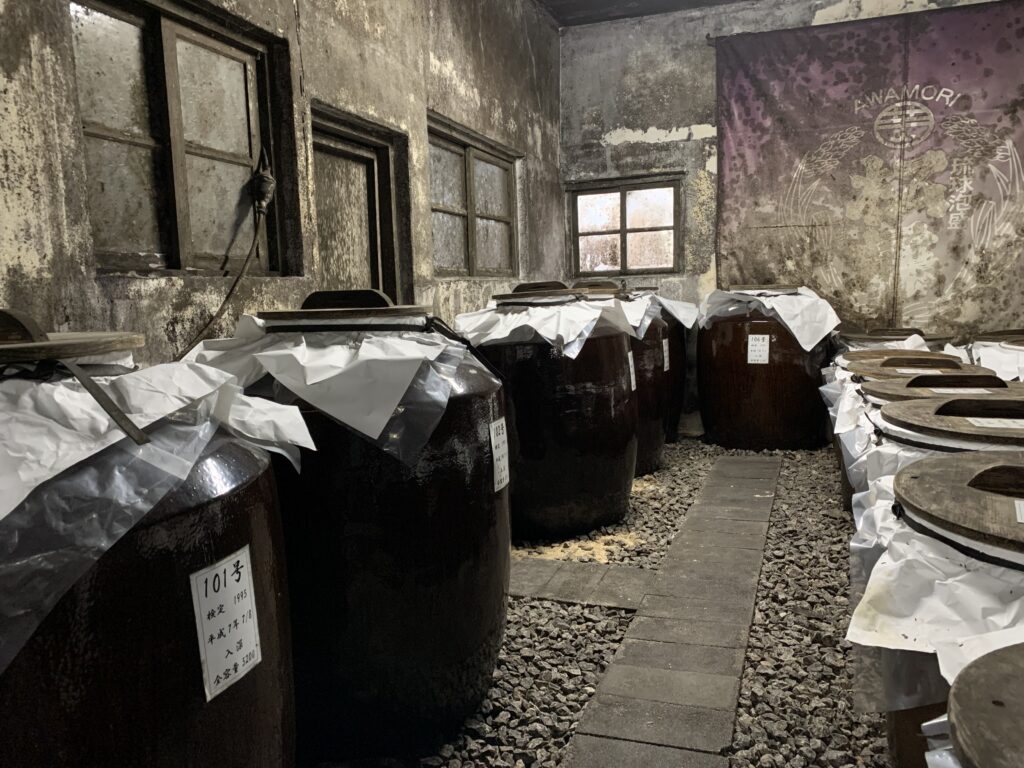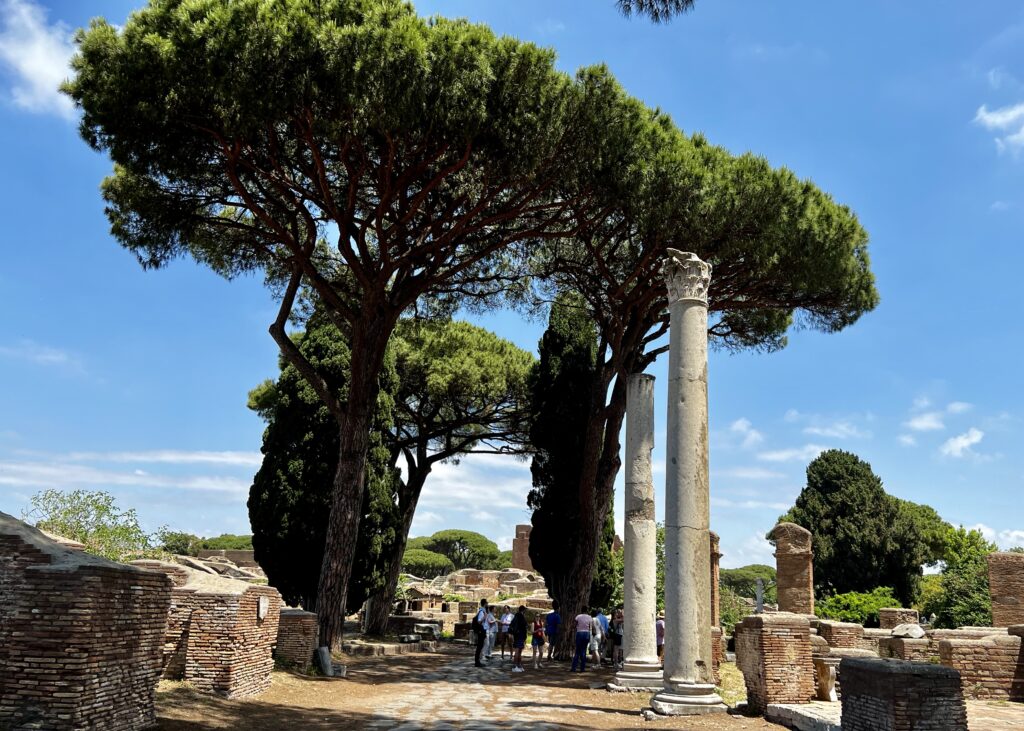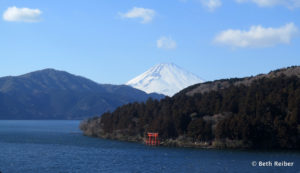There’s no place in the world like Venice. Nothing even comes close. That Venice exists at all is a miracle, a fragile, improbable city that has stolen the hearts of poets, musicians, artists and architects, not to mention Thomas Mann, Mark Twain, Peggy Guggenheim, and then all the rest of us.
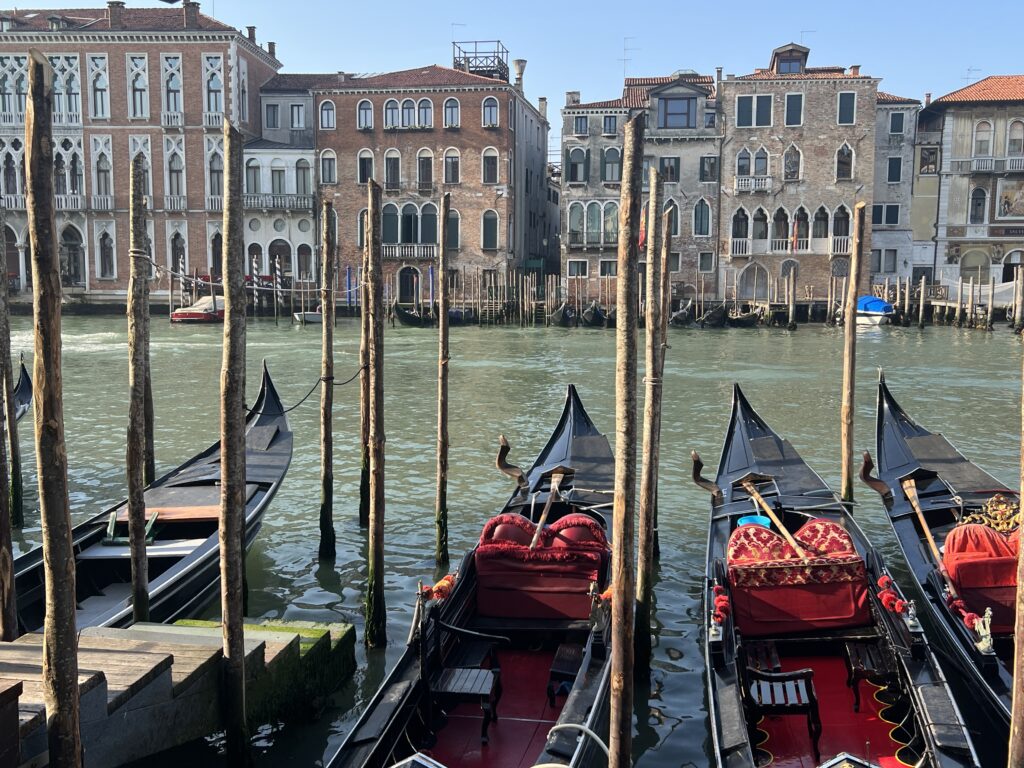
Although I’ve been to Venice several times, I was apparently always so awestruck that I couldn’t see beyond its incomparable beauty, how every bend of its narrow alleyways and canals brings you to new vistas and piazzas that open up like surprise packages.
But on my latest visit I was also dumbstruck; the logistics alone are mind-boggling. Trash, tides, tourists–they all must be managed. How could a city like Venice endure for so many centuries? Even its founding seems like a miracle.
The founding of Venice, the improbable city
Venice was born in a lagoon, after settlers arrived some 1,600 years ago seeking refuge from marauders. You don’t escape an enemy by fleeing to paradise, so salty marshes must have seemed a good choice for thwarting invaders. The problem was the mud. It sucked up to your knees every time you took a step, which didn’t bode well for living conditions.
And so these early Venetians pounded wooden poles packed tightly together into the muck, causing the goo around them to contract and harden enough to support weight. Wooden planks were then laid on top, followed by a layer of impenetrable limestone that allowed the construction of homes, churches and palaces.
Because the wood is preserved under saltwater and has not been exposed to oxygen, it has been protected all these centuries from decay. And here we think we’re smart.
Consider this: Venice is built atop a group of 118 small islands that are separated by canals and linked by more than 400 bridges. That alone makes Venice an improbable city. All the stones, plaster, bricks and infrastructure necessary to construct a city were floated in and carted around without the benefit of wide avenues, oxen-pulled carts, trucks and the ongoing latest in transportation.
The daily necessities of life
Venice doesn’t have cars, garbage trucks or Amazon minivans. And yet the conveyance of people, food, water, waste, garbage and daily necessities runs smoothly, despite narrow streets and canals, despite the obstruction of bridges with steps and all those gondolas. Everything is done by boat and on foot.
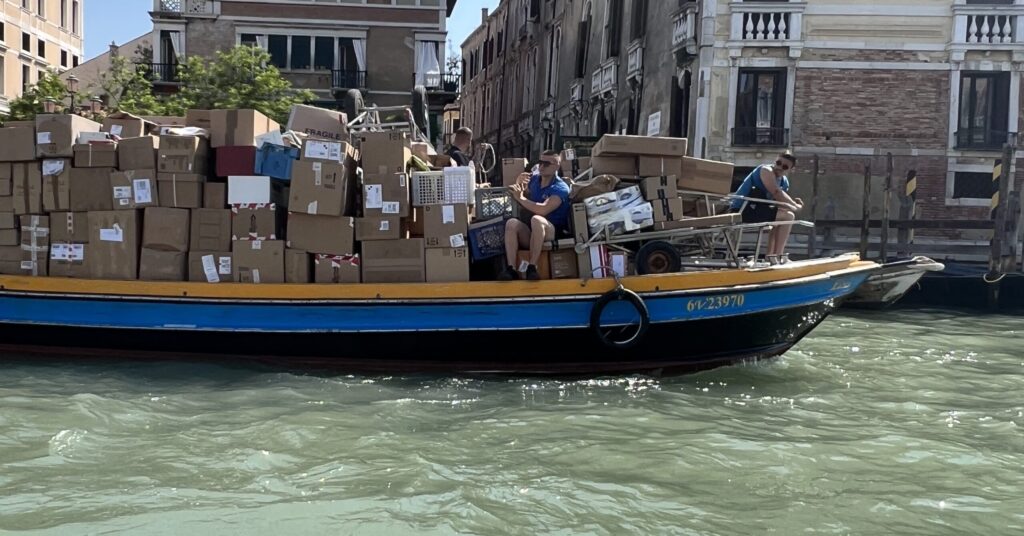
Collection bins for garbage are wheeled by hand to waterside points, where they are picked up by small cranes set atop barges and then emptied into the appropriate holds. People stronger than I maneuver two-wheeled carts piled high with toilet paper, wine and food over the steps of bridges to their appropriate destination.
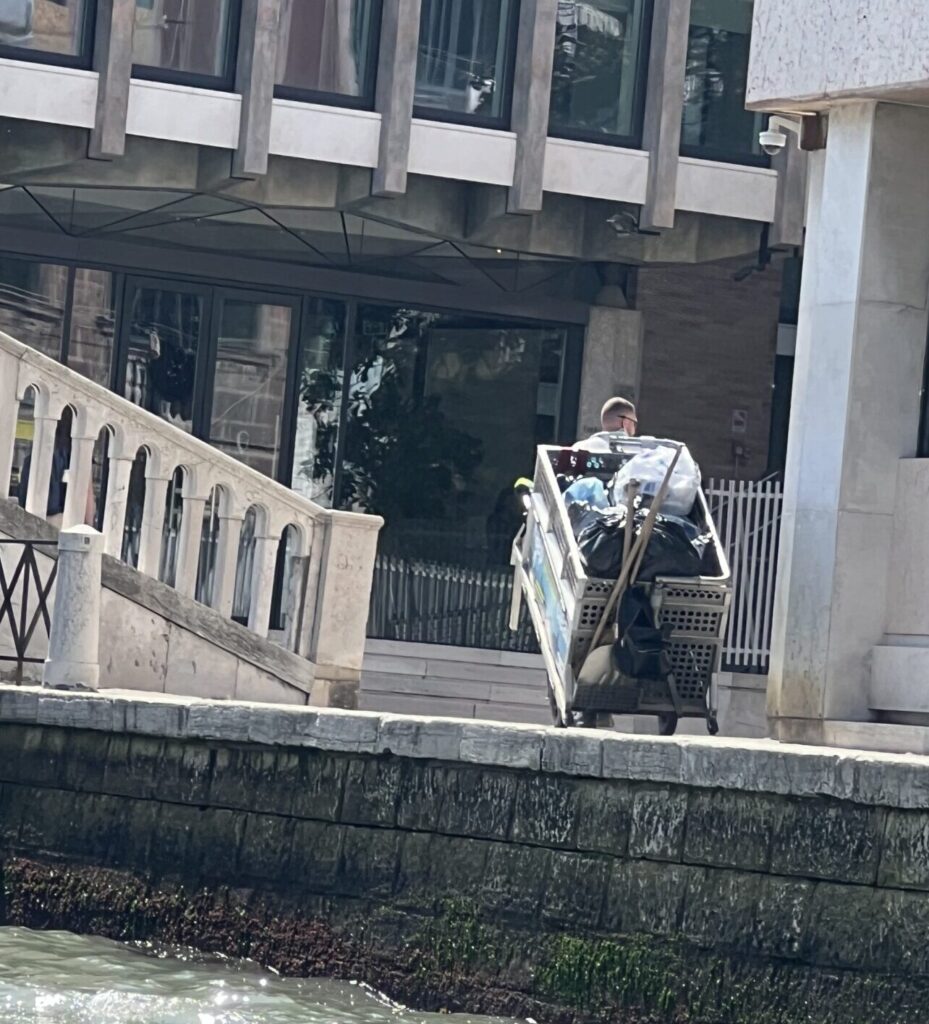
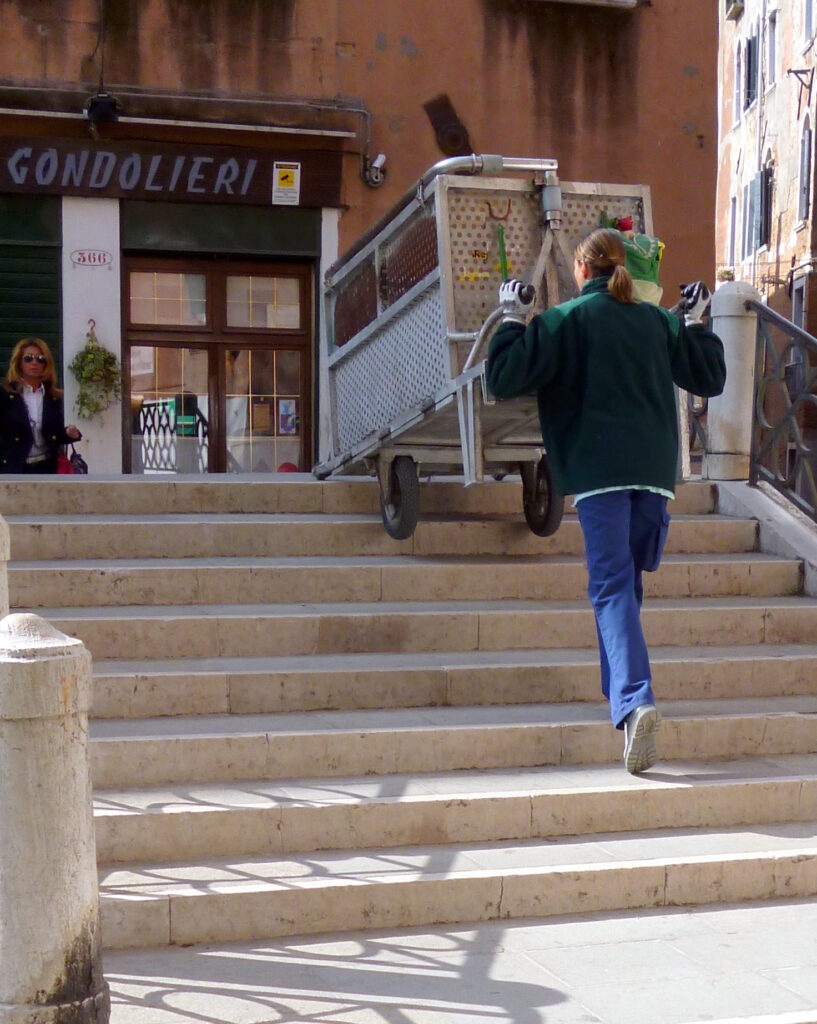
And though you probably don’t want to hear this, Venice has no sewer system, at least not like in your hometown. Rather, for centuries, human waste and rainwater have been channeled through brick and stone tunnels called gatoli and emptied directly into canals. But as gross as this seems, the twice-daily cycle of seawater inflow and outflow, otherwise known as tides, flushes everything out and keeps the canals clean. Recent decades have added septic tanks to larger buildings like hotels and museums.
I’m surprised how clean the canals are. Still, you don’t want to be those two American tourists who stripped naked and went for a swim in 2022. Or the “idiot” (the mayor’s description, though I concur) who this year jumped off a three-story building into a canal.
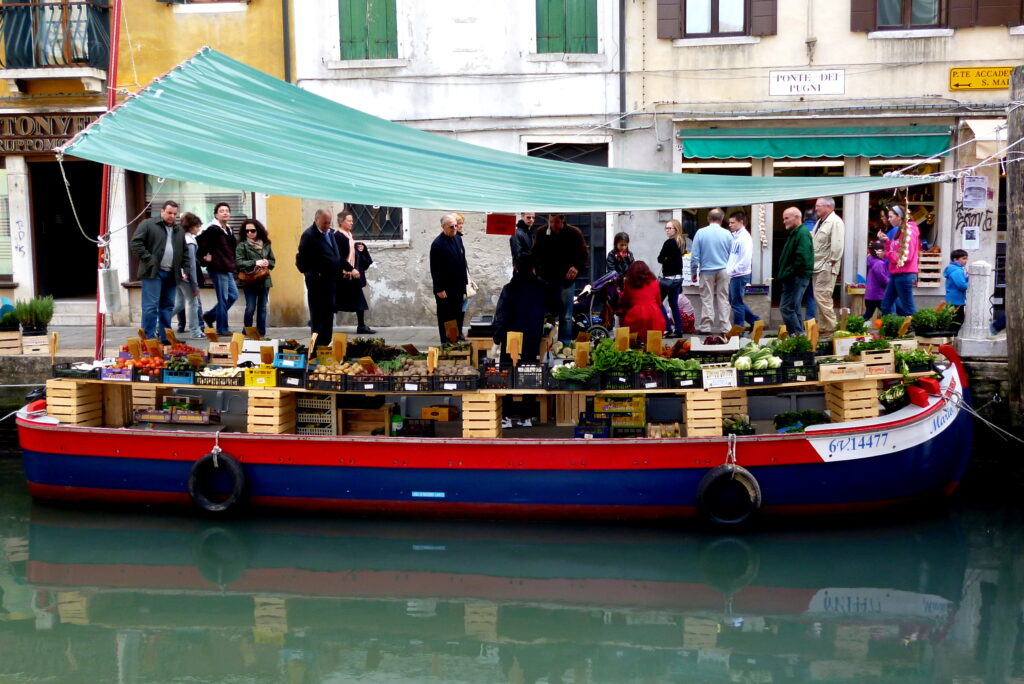
The demands of climate change make Venice an even more improbable city
Salt marshes act as a natural flood barrier, mitigating erosion and the damaging effects of waves. Marshes even fight climate change by locking up carbon.
But big ships coming through natural openings in Venice’s protective lagoon have created waves that pound the shoreline and increase erosion. It’s hard to imagine the shock of seeing huge cruise ships sail right past Piazza San Marco and dock nearby, a trauma I thankfully never endured. The floating cities are now directed to nearby ports, though their disgorgement of thousands of passengers, many of whom don’t spend enough money to contribute to the local economy in any meaningful way, adds to Venice’s perpetual overcrowding.
Unfortunately, the erosion of shoreline and resultant damaging floods are still carried on by cargo ships on their way to port just two miles away.
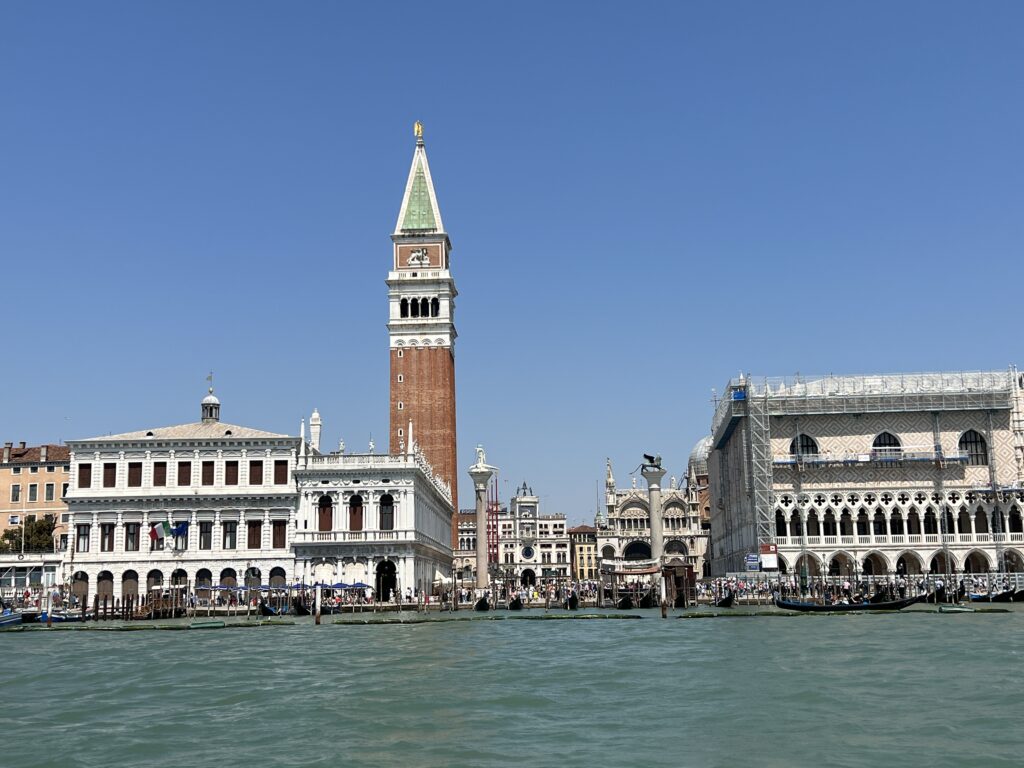
Of course, floods have always had their way with Venice. But the fact that the city barely sits above the waves makes climate change and rising sea levels all the more horrific. Venice suffered nine extreme floods in the entire 20th century. In the first two decades of the 21st century alone, there were 16 extreme floods.
To fight against climate change and aqua alta (high water), Venice spent 20 years constructing a barrier that fills the gaps of the lagoon. Nicknamed MOSE, the barrier’s 78 gates are raised only when off-shore monitors indicate the threat of devastating floods. Otherwise, you don’t even know the barrier gates are there, tethered deep down on the seafloor and therefore allowing boats to come and go and tides to do their business cleaning out the canals.
Still, Venice already sits low to the water, making climate-induced rising seas an existential threat. A plan has been circulating to inject seawater into aquifers below it, lifting the entire city out of danger’s way. Impossible, you might think? Yet what’s just one more improbability in such an improbable city?
The demands of mass tourism
There has been much in the news recently about floods of a different sort—the return of tourism following the pandemic but in greater numbers, leading to overcrowding at Europe’s iconic spots. Venice attracts about 30 million visitors a year, who gather mostly in an area of about two square miles that includes Piazza San Marco and Rialto Bridge. There are so many boats on Canal Grande, I’m surprised I haven’t witnessed a collision. There are so many gondolas on canals, there hardly seems room for them all.
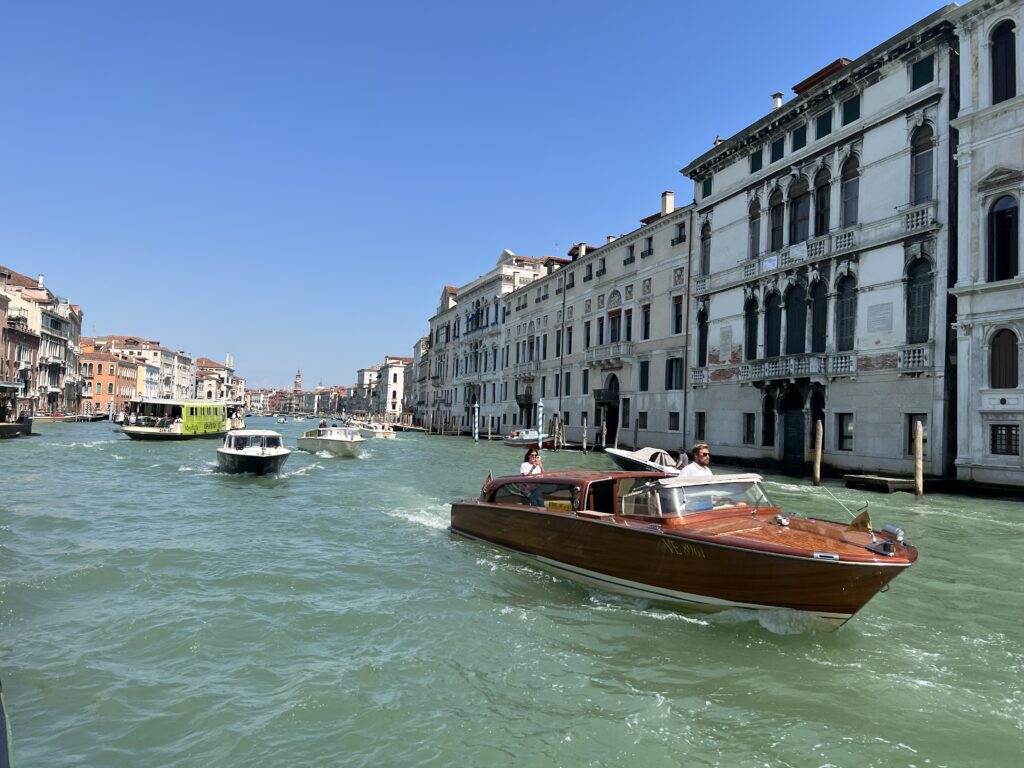
Of course, Venice lives from tourism. But small, local businesses that cater to residents are being devoured by bars and restaurants. Once-residential buildings now shelter tourists in hotels and Airbnbs. Because landlords earn higher profits from short-term rentals, the working class is forced to live on the mainland and commute to Venice. With jobs limited to tourism, many young Venetians move elsewhere for employment. In 1971, 108,400 people resided in Venice’s historic center. Today that number has dwindled to 50,000.
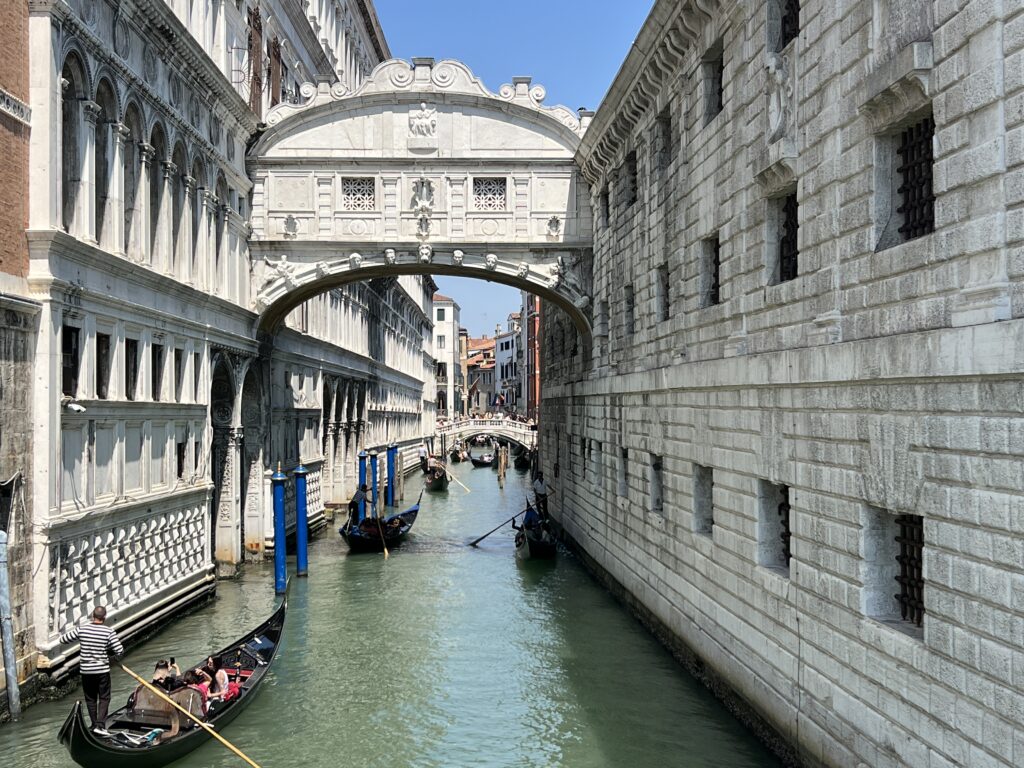
To deal with Venice’s ever-rising tides of over-tourism, the imposition of an entry fee has been bandied about forever. It is now slated for 2024 as an experiment. It won’t be much, just €5, and will be levied only on day-trippers. Although they make up about two-thirds of Venice’s visitors, day visitors don’t contribute much to Venice’s economy yet strain the city’s infrastructure. Overnight guests, who already pay a city tax, are exempt from the charge.
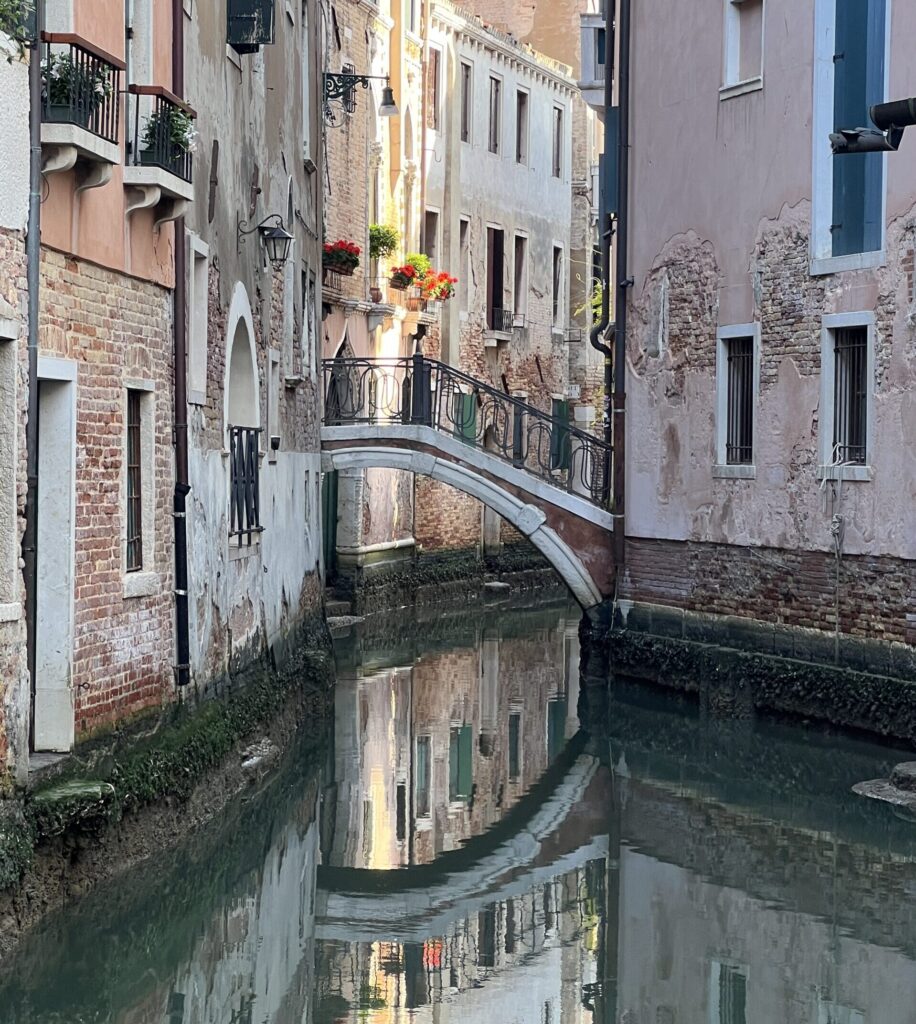
A personal decision
In September Venice dodged the bullet of being downgraded by UNESCO as a World Heritage Site in danger, with the major concerns being the impacts of mass tourism and climate change.
With all its problems, is Venice still worth it? Of course it is! But only if you visit with mindfulness, contributing to the local economy and treating your temporary home with the love it deserves.
If you care about sustainability, you should come for at least a few nights, staying in a locally owned property, perhaps in a neighborhood far away from Piazza S. Marco. That gives you the wonderful experience of exploring Venice’s nooks and crannies and strolling the San Marco waterfront when the day-trippers have gone. And if you can, come in winter.
I can’t visit a place without wondering what it’s like to live there. For more on Venice’s fight for survival from the standpoint of locals, see Campaign For A Living Venice.
Because this is what I love most about Venice—wandering without reason, getting lost, and marveling at everything in sight.
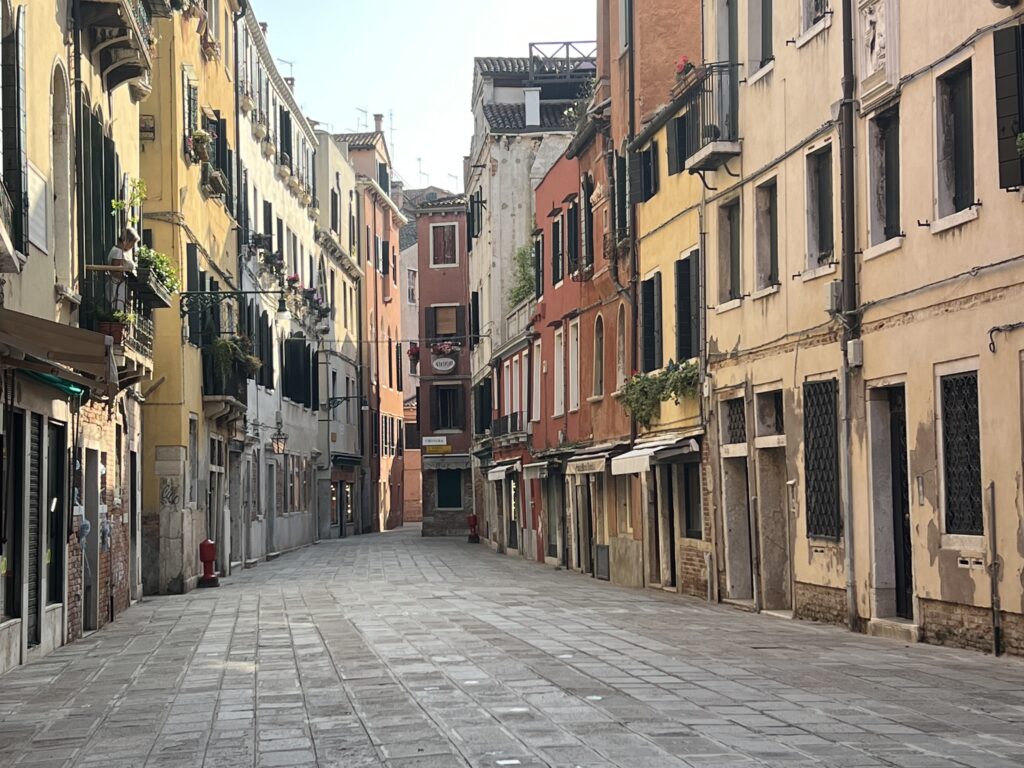
Just don’t jump into a canal, no matter how tempting it might be. And if possible, avoid the singular experience my friend Tom had, of being transported to the ER by ambulance. And, yes, it was a boat.
For more on Italy, see my article Limoncello 101: where to try it and how to make your own, published in 10Best/USA Today, and my blog, Finding Amore and Limoncello in Southern Italy.
